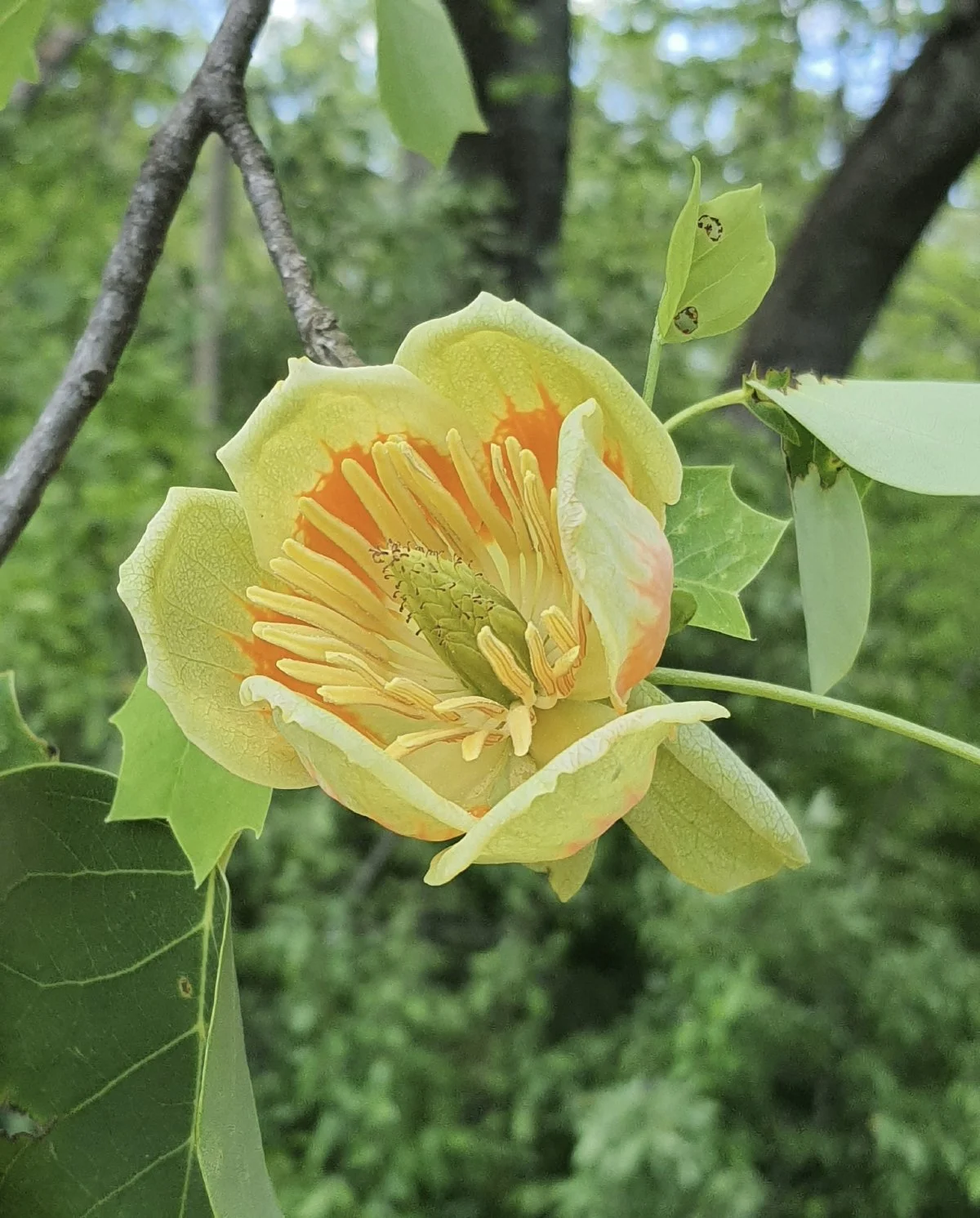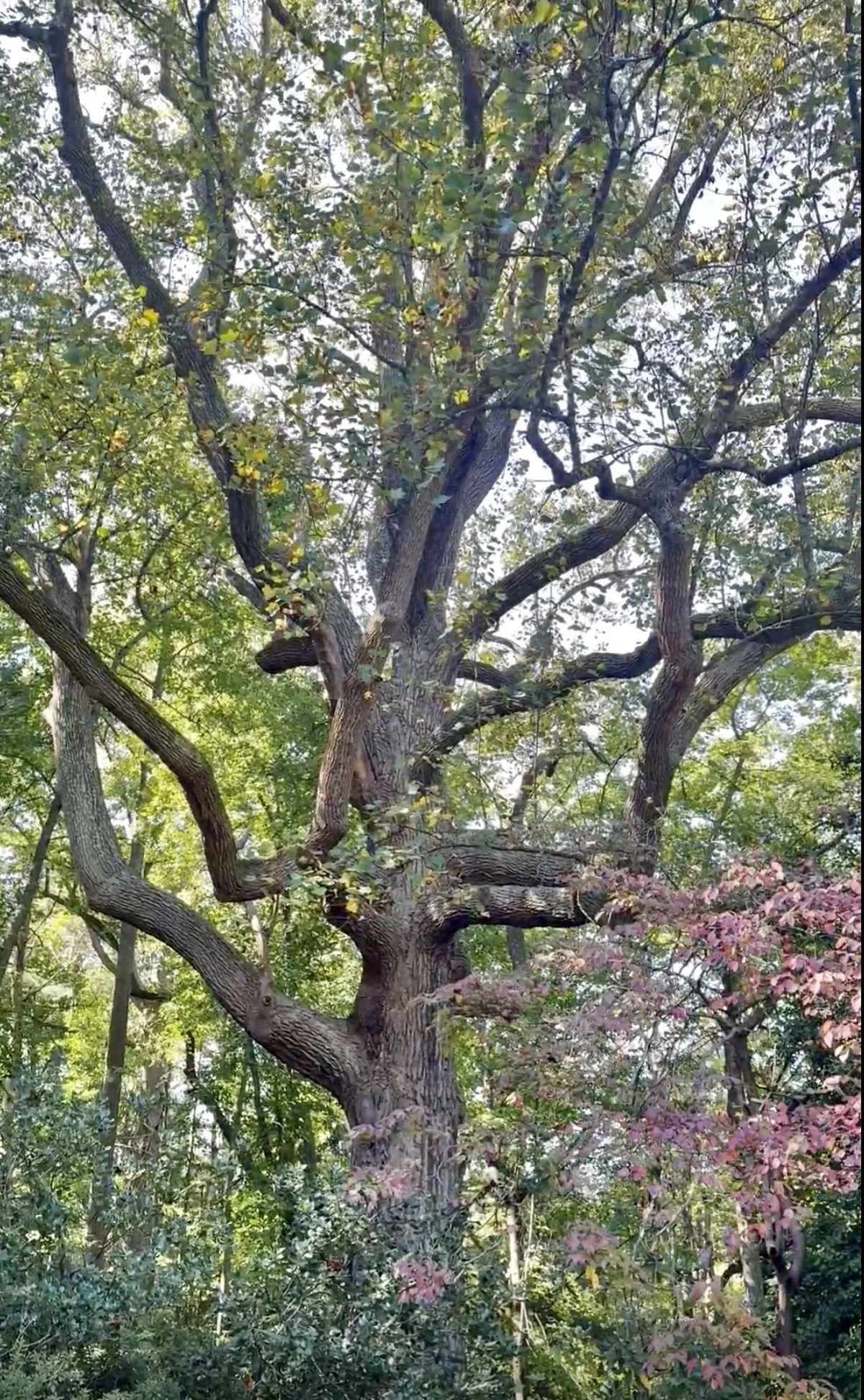The 201-year-old Signature tulip tree at Scudder Preserve. Photo by Kevin Knecht.
At the heart of Scudder Preserve in Middletown, New Jersey, a towering tulip tree stands as both a biological marvel and a living witness to more than two centuries of American history. This 201-year-old Liriodendron tulipifera is a monument to the power of land preservation and natural resilience.
Tulip trees are deciduous plants native to North America. Related to magnolias, they are among the largest-growing tree species on the continent. Measured during an official inspection in July 2025, Scudder Preserve’s tulip tree recorded a circumference of 17 feet 5 inches, a height of 124 feet, and a crown spread of 112 feet. It earned an impressive 361 points in the American Forests National System and was officially designated as a Signature Tree. It is now recognized as the second-largest tulip tree in both Monmouth County and the entire state of New Jersey.
Scudder Preserve. Photo by Kevin Knecht.
The tree grows in a shaded rhododendron thicket in Scudder Preserve, located at 85 Browns Dock Road. Protected through a series of conservation easements donated by the visionary Scudder family beginning in 1983, the land officially became Monmouth Conservation Foundation’s first owned preserve in April 2024. This milestone marks a poignant new chapter in MCF’s mission to protect and steward open space throughout Monmouth County.
“We are honored to care for such a remarkable piece of New Jersey’s natural heritage,” said Jena Cosimo, Director of Acquisitions at MCF. “This tree is extraordinary in its size and age and reflects the kind of long-term impact that land conservation can have for nature, the climate, and generations to come.” The tulip tree took root in 1824, a period when New Jersey was transitioning from its Revolutionary War legacy into the industrial age. It predates the formal abolition of slavery in the state by more than four decades. Through the years, it has weathered wars, industrial development, environmental shifts, and the changing rhythms of American life.
The large blossoms that give tulip trees their name. Photo by Kevin Hall on Unsplash.
Its presence today is more than symbolic. Trees this size and age are rare and serve as ecological powerhouses. This single tulip tree performs six hundred times the environmental benefits of a typical tree, by improving air and water quality, supporting biodiversity, preventing erosion, and storing large amounts of carbon, all while providing shade, shelter, and natural beauty.
Because of its exceptional size, health, and aesthetics, the tree has been approved for inclusion in the New Jersey Big and Heritage Tree Registry. Maintained by the New Jersey Forest Service since the 1930s, the Registry helps document the largest and most historically significant trees in the state. It also tracks how tree populations have changed over time, offering insights into the environmental shifts that have occurred across decades. Anyone can nominate a tree for the New Jersey Big and Heritage Tree Registry. Trees are evaluated based on species, size, condition, and historical or cultural significance. To learn more about eligibility and to explore the Big Tree Interactive Map, visit the New Jersey Forest Service’s website or contact their Division of Parks and Forestry.
Scudder Preserve’s tulip tree. Photo by Jena Cosimo.




